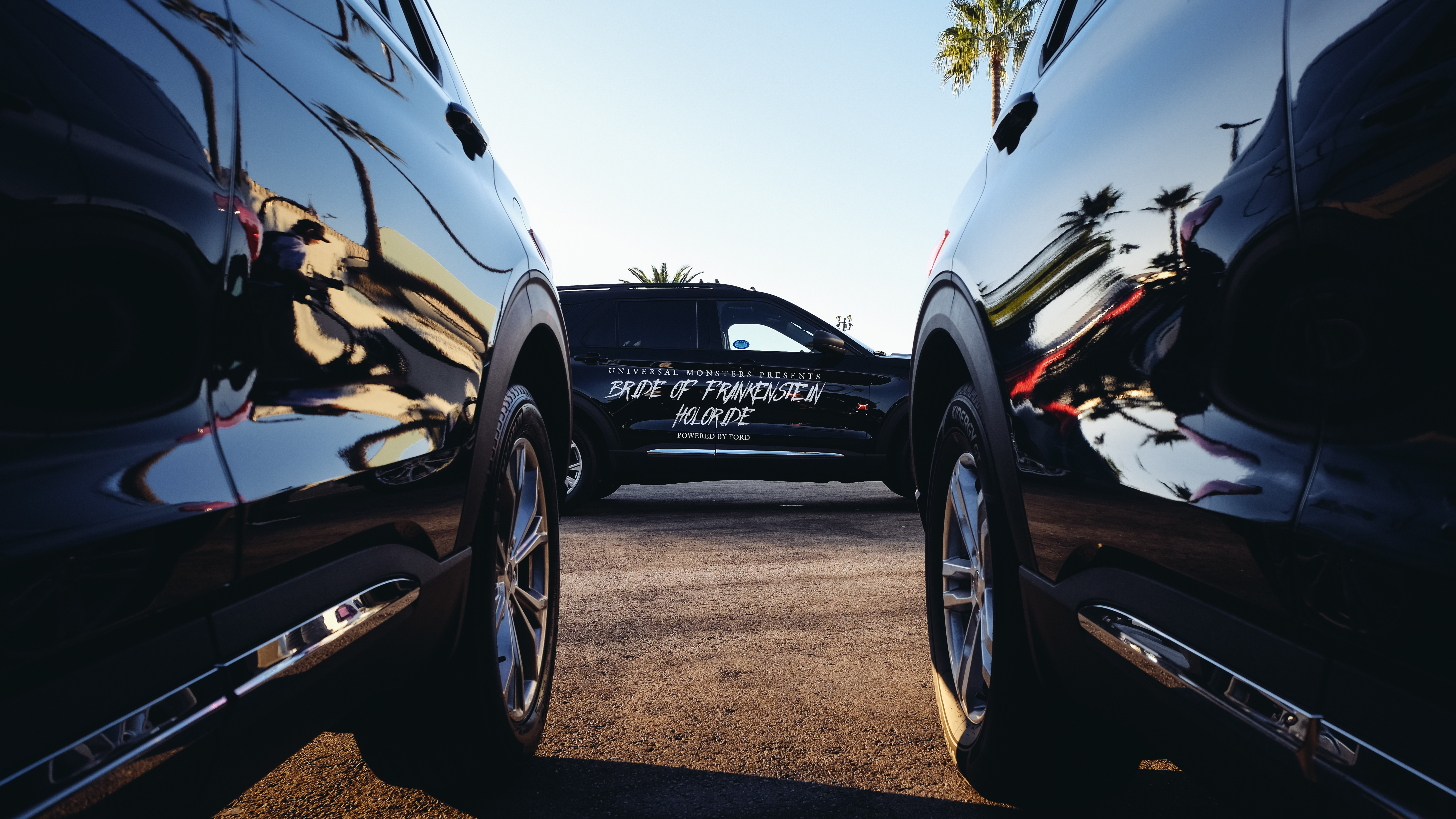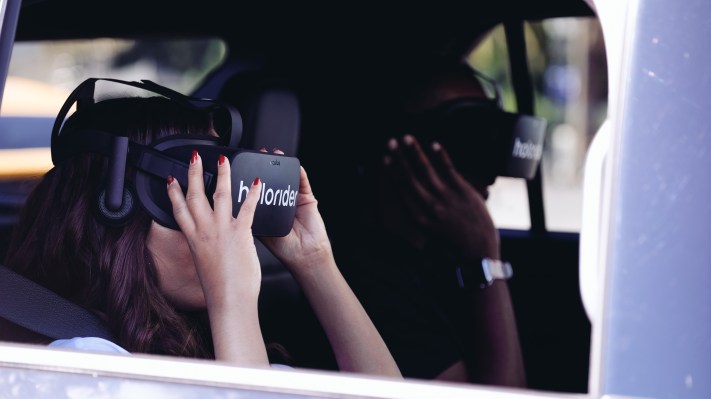Audi spin-out Holoride is launching to the general public for the first time, through a collaboration with Ford and Universal Pictures. The young company is focused on a unique twist on virtual reality: in-car VR, to be experienced by a passenger while a vehicle is in motion.
VR in cars might sound like a bit of a conflicted or risky proposition, but it actually makes a lot of sense once you understand more about Holoride’s approach. TechCrunch took it for a spin at CES this year, and found that the technology’s ability to match a car’s movements to a virtual immersive environment made for a surprisingly impressive experience.
The company has previously shown off underwater adventures, as well as a Marvel Avengers-themed story, but the one it’s launching for the public is a “Bride of Frankenstein” ride that will be on offer for free between October 14 and November 9 at Universal CityWalk in Hollywood. Per the news release describing the adventure, there are virtual monsters and obstacles to overcome, and all of it is mapped to the ride you take inside a new 2020 model year Ford Explorer SUV.

Entertainment technology startup Holoride teams up with Ford and Universal Pictures to create “Universal Monsters Presents Bride of Frankenstein Holoride” — a highly immersive VR experience available complimentary to the public at Universal CityWalk Hollywood
The narrative is created by Universal Monsters, the sub-brand of Universal focused on its stable of cinematic ghouls, and Holoride takes in driving data, including speed of the vehicle and steering info to match the VR experience to the actual trip the rider is on.
The Ford partnership is one of the reasons Audi spun out this particularly venture, as it stated when it announced the move that it was hoping to get Holoride in the backseat of vehicles from all automakers.
This first public service offering should provide crucial insight for the Holoride team regarding its eventual commercialization and deployment plans for the technology. VR in cars still seems like a niche use case, but it’s possible it’s the niche that helps VR find some kind of footing among more general population users who aren’t likely to own their own headset at home.
